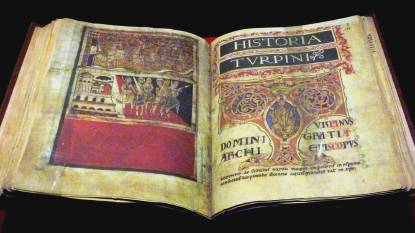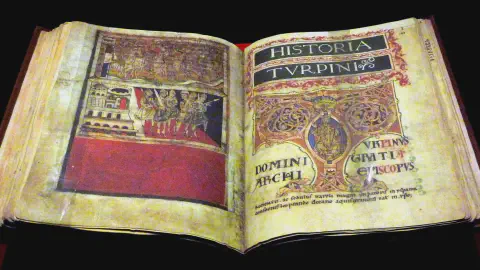
About The Codex Calixtinus: The Book of St. James
Posted: | Updated:
Reading time: 14 minutes
About The Codex Calixtinus: The Book of St. James
Posted: | Updated:
Reading time: 14 minutes
By: Simon Kemp, Editor
A short history about the origins and stories behind the Medieval book, the Codex Calixtinus . The Codex is known as the book of Saint James. I will discuss the five separate books in the Codex Calixtinus along with the different composition of the book itself and the music contained in parts of the book.
What is the Codex Calixtinus?
The Codex Calixtinus, also known as the Liber Sancti Jacobi or Book of Saint James, is a medieval manuscript that dates back to the 12th century. It is named after Pope Calixtus II, who was believed to have had a role in its compilation. The codex is a collection of texts related to the pilgrimage to the shrine of Saint James in Santiago de Compostela, Spain.
The manuscript is composed of five books and covers a wide range of topics associated with the pilgrimage. It includes liturgical texts, sermons, hymns, miracles attributed to Saint James, descriptions of the transfer of his body to Santiago, legends about Charlemagne and Roland, practical advice for pilgrims, and even musical compositions. The codex provides insights into the spiritual, cultural, and historical aspects of the Camino de Santiago pilgrimage during the medieval period.
The Codex Calixtinus holds great significance for the cultural and religious history of Spain and Europe. It played a crucial role in promoting the veneration of Saint James and the pilgrimage to Santiago de Compostela. The codex’s compilation and dissemination helped establish the Camino de Santiago as one of the most important Christian pilgrimages and contributed to the development of a distinct pilgrimage culture in the Middle Ages.
Codex Calixtinus PDF Version
The Codex Calixtinus is available as a PDF file with some interesting interpretations and historical notes from the Yale University website here: https://alumniacademy.yale.edu/sites/default/files/2020-07/Codex%20Calixtinus.pdf
Where is the Codex Calixtinus?
The Codex Calixtinus has long been housed in the Cathedral of Santiago de Compostela, located in the historic city of Santiago de Compostela in Galicia, Spain. The cathedral is widely recognized as one of the most important Christian pilgrimage sites in the world and has been a destination for travelers since the Middle Ages.
Within the cathedral, the Codex Calixtinus was typically displayed in a designated area, often in a specially constructed case or within the library. Pilgrims and visitors had the opportunity to view this revered manuscript, which held immense historical, religious, and cultural significance.
In 2011, the manuscript made headlines when it was stolen from the Cathedral of Santiago de Compostela. The theft resulted in a significant loss to the cultural heritage of the region, sparking international attention and a widespread search for the stolen manuscript.
Fortunately, after an extensive investigation, the Codex Calixtinus was recovered in 2012. The successful recovery was met with relief and celebration, and the manuscript was subsequently returned to the custody of the cathedral authorities.
What Does the Codex Calixtinus Include?
The Codex Calixtinus was most probably written during the 1130s to the 1140s and it consists out of 225 scrolls which were 295 x 214 mm each. In 1966 the Codex Calixtinus was restored and the pages were trimmed down, each page contains 34 lines within a column. In 1609, book five was torn out; this also had to be restored at some point.
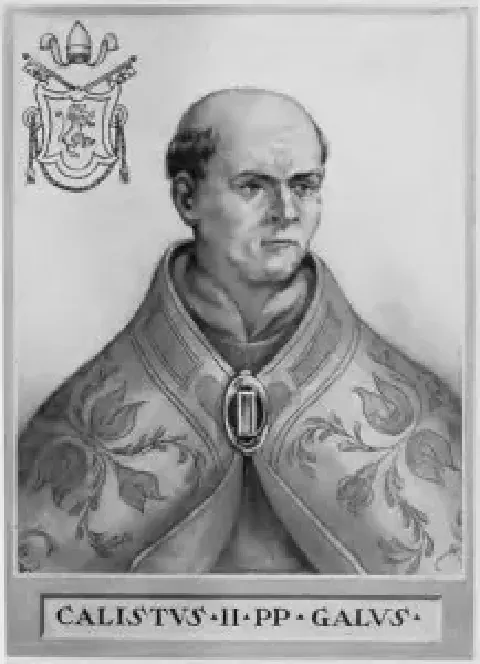
These scrolls are made up of five books and two appendices with the first book containing information about Catholic liturgies. The second book is known as he Book of Miracles’ and the third book explain the ransfer of the Apostles corpses to Compostella’. The French King Charlemagne’s accomplishments are discussed in the fourth book. The fifth book is a guide for the pilgrims who want to follow the Jacobean pathway to the Galician capital.
The first book is a letter from the Pope Callixtus II (1119-1124) which tells us a story about the many good deeds of Saint James. Saint James was one of the three disciples who were closest to Jesus Christ. He is also known as one of the first disciples to die for Jesus, in other words shed blood for Jesus Christ. Saint James was known by many names, the Latin version of the name is Iacobus which could be changed to Tiago, Iago or Santiago.
The Codex Calixtinus is also known to be the guide to the Camino of Santiago , which basically means the road to Santiago. This book describes the hazardous conditions Saint James and the seven apostles had to endure. It also tells the story of origin of the Cathedral of Santiago.
Book 1: Catholic Liturgies
This book contains chants, sermons and explains the religious celebrations of Santiago. The first two pages are written by the Pope Callixtus II to recount the hazardous environments the manuscript had to endure.
Book 2: The Book of Miracles
This book discusses the miracles that Saint James or Santiago accomplished; there were 22 miracles that are mentioned in the book. Saint James was also known to be one of the few disciples to witness the Transfiguration that occurred on Mount Tabor , the prayer that occurred in the Garden as well as Jesus Christ’s resurrection.
Book 3: Transfer of the Corpses to Compostela
The third book is known to be the shortest of the five. This particular section describes the process of moving Saint James’ body from Jerusalem to Galicia where his tomb is said to be. The scallop shell has become a symbol for Santiago after the first pilgrim took home one of these shells as a souvenir to commemorate his trip to Santiago.
The apostle James returned to Jerusalem to join Jesus disciples and to support the Virgin while on his deathbed. In the year 42, under the order of Herod Agrippa I, also known as king of Judea , Saint James was beheaded. This incident caused the seven disciples to escape during the night to move Santiago’s body to Galicia by boat at the port of Padron. Santiago’s body sank in the water and a rock formed around it, this was known as a Holy Sarcophagus.
The seven disciples asked queen Lupa if they could bury his body on the land of Compostelo, she refused. Countless attempts from the seven disciples converted the pagan monarch to Christianity and she eventually allowed the seven disciples to bury the apostle. The place where he now lies is known as the Santiago Cathedral , or Catedral de Santiago de Compostela, in Spanish.
Book 4: King Charlemagne’s History and accomplishments
This book is, more often than not, referred to as Pseudo-Turpin. It is based on Archbishop Turpin. This section tells the story of Charlemagne going to Spain, the Roncevaux Pass Battle and Roland’s death.
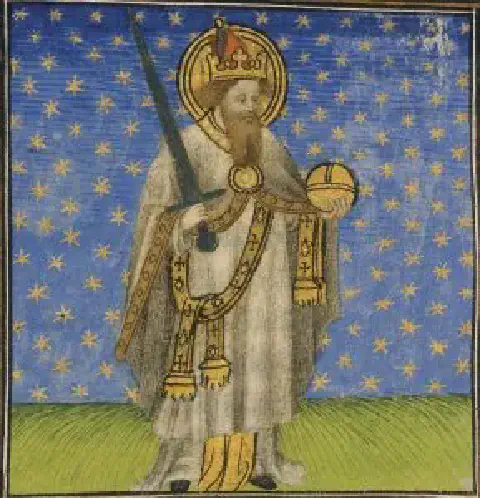
One of Charlemagne’s dreams are described where Santiago appears and tells him to follow the Milky Way, which is known in Spain as the Camino de Santiago because of Saint James’ influence in the matter. This book, Saint James the Moorslayer’, is has been deemed as a form of propaganda thought out by the Catholic Church to get recruits for the Military of Santiago. This was to protect the Church’s interest in Spain from Moorish influencers.
Saint James, or Santiago is still to this day praised by churches for his influence. He is known as the oor-slayer, or Moorslayer and a few statues and chapels have been erected in Santiago’s name along the Camino of Santiago or the road known as The Camino Francés .
In fact, the legends and stories around St. James around the world are by no means consistent. It even appears that there were several people throughout history who were bestowed with the name St. James .
Book 5: Guide for the pilgrims
Book V is a guideline for pilgrims about the elements they will come across on the pathway. This tells the pilgrims where they can stop to eat, visit tourist attractions such as chapels and sanctuaries and the places they should avoid due to churches and people who claim they have valuable information regarding the life and times of Santiago or Saint James. By reading this book, you understand the trial and error Saint James might have experienced on his path in life.
This Guide for the Pilgrims also describes the cathedral of Santiago and the city itself known as Santiago de Compostela. It also describes the rivers, roads, the countryside and even Saint James’ tomb! The fifth book is considered the first Basque guide book containing Basque words that were used back in the day.
Esteemed scholars regard this book as very important and due to the use of Basque words; the fifth book has gained a lot of fame as it is considered important to protect the Basque language. These Basque words and phrases are some of the earliest words used in the post-Roman era.
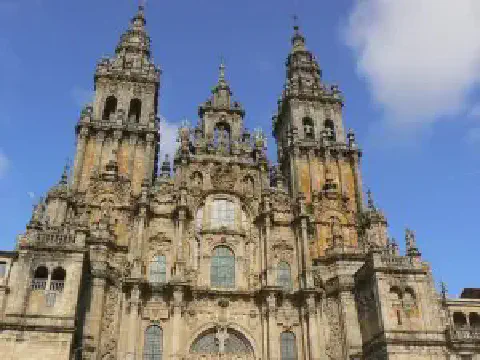
The Compostela
This document was issued by ecclesiastical authorities; this is to certify the completion of 100km of the Camino of Santiago either while on the back of a horse, on foot or 200km on a bike. You can have your Credential stamped once you have proof that you have finished the Camino de Santiago for religious or spiritual reasons, upon receiving the Compostela .
To avoid the falsification of the scallop shell (previously mentioned in the third book), the need arose to provide an actual letter of confirmation to prove that someone has walked the path of the Camino de Santiago.
The Monarchs of the Catholic Church decided on the Royal Hospital Foundation which would allow pilgrims, by using the Compostela, to stay for free in the Hostal de los Reyes Catlicos. The main idea was to provide healthcare to the pilgrims who chose to walk the Camino of Santiago or any walkers who came to Compostela.
This foundation only increased the interest Galicia with the hospital becoming the most important point of interest becoming a medical school. The tradition carried on with the building opening in 1954 again, recognising it as a Parador of Tourism. This only means that it is truly recognised as part of the history of Compostela and in essence, combining it with the importance of the Codex Calixtinus.
As the achieving of the Compostela began to be seen as a fun and somewhat prestigious achievement, for no apparent reason, the archbishop decided that a pilgrim would only receive Compostela if he or she went to the tomb of the Apostle. In essence, this accomplishment can only be awarded to you if you completed this pathway for religious reasons.
If you are interested in the Camino de Santiago for cultural enlightenment or just for the fun of it, keep in mind that it has meaning behind it. Especially for the people that is native to the town, except of course the employee of the Santiago cathedral. He has coined another type of value to this pathway. The archbishop also requires of you to finish the Compostela by finishing it on foot and following the allocated routes.
Your certificate or Compostela can be refused if you have not finished the pathway in this desired way. The Compostela will also only be awarded if you are mature enough to understand this religious accomplishment, in the event that you are not regarded as mature, the Compostela will be written out in the name of your guardian with your name attached on the certificate.
Codex Calixtinus Music
There are three sections of the Codex incorporate music. Book I, that consists of liturgies, Appendix I and also Appendix II. These are the first examples of written music that contain polyphony , which is something musicologists are very interested in.
The Codex Calixtinus is famously known for the fact that it is the first composition of three voices singing together. To this day, polyphony has delivered some great sounding music and this book consists of 20 polyphonic works.
Codex Calixtinus Theft and Recovery
On the 7th of July 2011 it was reported that the Codex Calixtinus had disappeared or had gone missing. Only a year after the disappearance of this precious jewel, it was found in the garage of one of the former employees of the Santiago cathedral in the town of Milladoiro. This former employee was also known as the local electrician and was native to the town of Compostela. This employee not only had access to the Codex Calixtinus, but also to the rest of the Santiago Cathedral and used it to his advantage.
In this employee’s garage, the police also found other valuables from the sanctuary that he had been stealing bit by bit. He had also stolen money from the sanctuary, this came down to more than one million euros. After the authorities realised that the theft of these items must have a motive behind it, they had a couple of reasons as to why someone would commit a theft like this. The first reason they could think of was internal revenge. This could have been aimed at the dean of the Santiago cathedral known as Jos Mara Daz. For anyone who has watched White Collar, it could simply have been a case of art theft.
The conclusions drawn raised the question as to what these valuables could be worth. Experts solved this conundrum and said that the Codex Calixtinus could amount to 10,000,000 euros. Erik el Belga, infamous art thief , explained that an operation similar to this one can only depend on insider information. To make things worse, when the Santiago sanctuary came to the realisation that the Codex Calixtinus was stolen, they immediately went to the police. The only problem with this was that there was no CCTV camera in the specific room where the Codex Calixtinus was being held.
Along with the Cultural Heritage Brigade , the police looked through all 25 cameras’ CCTV history of about 400 hours. Eventually, on the 4th of July in 2012, a year after the Codex Calixtinus was stolen, it was found. The former employee, Manuel Fernndez Castieiras, received the sentence of fifteen years in prison. His sentence would not have been that long, yet the fact that he had stolen other valuables from the sanctuary only made his case worse. Experts also argued that the value of everything that was found in the former employee’s garage would amount to 2,546,679 euros.
Not long after the return of the Codex Calixtinus, the public requested to physically see this guide with their own eyes. The city of Galicia orchestrated an educational exhibition which would travel around the country in order for the public to see this valuable piece of history. For those who are still concerned about the whereabouts of the book, it is available for you to see in the city of Santiago in the cathedral.
Codex Calixtinus FAQ’s
What is the Codex Calixtinus?
The Codex Calixtinus is an important 12th-century manuscript related to Saint James, famously associated with the cathedral of Santiago de Compostela in Spain.
Who wrote the Codex Calixtinus?
While originally attributed to Pope Callixtus II, modern scholars believe the Codex Calixtinus was compiled by multiple authors over time.
Why is the Codex Calixtinus significant?
The Codex Calixtinus provides valuable insights into medieval religious culture, particularly the cult of Saint James and the history of the Camino de Santiago pilgrimage.
What content can be found in the Codex Calixtinus?
The Codex Calixtinus contains a diverse collection of texts, including sermons, miracle reports, liturgical pieces, and a guide for pilgrims visiting Santiago de Compostela.
Where can I view the Codex Calixtinus?
The original Codex Calixtinus is housed in the cathedral of Santiago de Compostela. However, reproductions and digital copies are available for study.
How has the Codex Calixtinus influenced the Camino de Santiago pilgrimage?
The Codex Calixtinus includes one of the earliest guides for the Camino de Santiago pilgrimage, and its historical influence continues to shape the journey today.
What is the history of the Codex Calixtinus?
The Codex Calixtinus, with its rich history dating back to the 12th century, has played a crucial role in the religious and cultural development of Santiago de Compostela and the Camino de Santiago.
What art style characterizes the Codex Calixtinus?
The Codex Calixtinus is known for its beautiful illuminations, a distinctive feature of medieval manuscript art.
Has the Codex Calixtinus ever been stolen or lost?
The Codex Calixtinus has a dramatic history, including a high-profile theft in 2011. It was recovered a year later.
What miracles are reported in the Codex Calixtinus?
The Codex Calixtinus chronicles several miracles attributed to Saint James, offering unique insights into the saint’s cult during the Middle Ages.

